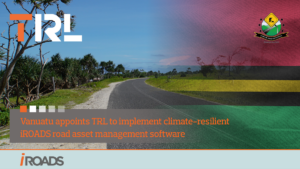By: Nick Vague, Senior Solutions Consultant, Brightly Software
What happens when assets are NOT managed intelligently? It causes knock-on effects and disruption that could otherwise have been avoided.
Picture this: A gully along a highway is running slow due to a broken pipe and a weather warning for heavy rain is in place. Overnight, the rainfall causes localised flooding, resulting in road closures and diversions being put in place. Subsequently the broken pipe allows the roads sub-surface to be washed away causing the road surface to collapse, creating further delays and disruption.
A situation like this is however avoidable, with a single asset management system in place, a proactive plan could be implemented, ensuring regular inspection and early identification and resolution of issues – reducing both cost and disruption.
Preventing chain reactions
Understanding how assets behave both independently and in relation to their surroundings over time is almost like lining each asset up as a domino in a row. Stopping them from falling over, and setting off a chain reaction, is essential to minimising asset failure and creating wider disruption. Here, data is the superglue.
Local authorities can use centralised data across asset classes to not only understand the characteristics of every single asset, but also analyse the impact they have on each other. For example: what are the weak spots that are letting them down and costing them money? Where can they apply that metaphorical superglue to mitigate costly work, health and safety risks and community disruption?
To understand this fully, let’s look at the challenges of specific asset classes, as well as examples of the domino effect in action…
Highways, Bridges and Structures
The intricate network of assets that supports every journey on UK roads is vast – from carriage and footways to streetlights, traffic signals, bridges, retaining walls and signal gantries. Each of them play their own important role in ensuring the safe and efficient transit of communities.
Yet, we’re facing the reality of a rapidly ageing road network with ever reducing budgets. On top of this, with over 300 local authorities declaring a climate emergency, net zero goals are high on the agenda and finding ways to operate more sustainably in the midst of budgetary pressures is a real challenge.
Let’s also consider the current skills shortage of highly trained engineers that are needed to maintain the complexities of bridges and structures. This skills gap is being plugged with contractors who are often using their own systems to record the findings of inspections. This is leading to siloed data across multiple disparate systems, therefore, spotting opportunities to streamline operations and reduce remedial spending is all but impossible without highly effective communication and collaboration.
Drainage
Drainage underpins everything on the highway, and our communities are often built on-top of a drainage network that was installed more than a century ago. With a lack of comprehensive, accurate plans, it’s the asset class where councils, understandably, have the least knowledge about the location and status of these hidden but vital assets.
But a single cracked pipe could cause sinkholes in a highway and close roads for weeks at a time, not to mention the cost of surveying and repairs.
When it comes to drainage, having an asset management platform where you can continually record the location and condition of pipework as well as seamlessly integrating with drainage survey AI providers, would build a clearer picture of the network as a whole – Re-mapping it over time.
From this standpoint, with more detail and understanding of asset behaviours, local authorities can start to proactively manage maintenance schedules based on historical trends.
A united approach to asset management
Assets. United. is a joined-up approach to asset management from Brightly, which gives its users a holistic and detailed view of all assets within their jurisdiction, irrespective of asset class, so they can make smarter decisions. In turn, these smart decisions have the potential to rapidly filter through every stakeholder, from the procurement team and senior managers within the council, to engineers on the ground, right through to drivers, cyclists and pedestrians trying to get around safely. Ultimately, the initiative uncovers synergies while putting the systems’ users in control of the actions they need to take.






















